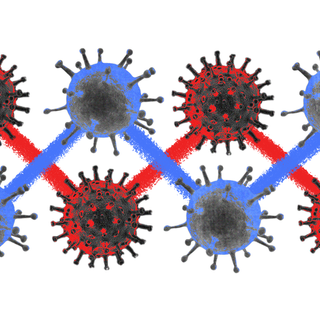In a first-of-its-kind discovery, researchers have traced brain signals associated with the “ebbs and flows in obsessive-compulsive disorder (OCD) symptoms” that people living with the condition experience in their everyday lives. The research, published in Nature Medicine, aims to improve treatments for OCD, a mental health condition which, according to the World Health Organization, is one of the top 20 causes of illness-related disabilities and affects 2% of the population worldwide.
Critically, the findings could help improve a type of therapy known as ‘deep brain stimulation’ (DBS), which works by sending mild electric pulses to the brain using electrodes placed inside the brain itself. Traditional DBS has unintended side effects and involves regularly seeing doctors to provide a steadystream of pulses.
But the new findings can lead to the development of ‘adaptive’ DBS, which will only respond to symptoms in real-time by detecting their unique brain signals and in the process — sidestepping the adverse side effects and doctors’ visits, and not to mention, improving patients’ quality of living.
This is important, because 20-40% of people with OCD don’t respond to traditional treatments, according to a press release by Brown University, whose researchers led the study. “A DBS system that can adjust stimulation intensity in response to symptoms may provide more relief and fewer side effects for patients. But in order to enable that technology, we must first identify the biomarkers in the brain associated with OCD symptoms, and that is what we are working to do in this study,” said David Borton, an associate professor of biomedical engineering at Brown University, and a senior author of the new research.
Related on The Swaddle:
Brain Implant Offers Hope For Treatment‑Resistant Depression
The other salient feature of the findings is that the researchers traced brain signals associated with environmental triggers around a person going about their daily life and activities — providing sharper insights into how and when OCD symptoms manifest.
“This is the first time brain signals from participants with neuropsychiatric illness have been recorded chronically at home alongside relevant behavioral measures,” said Nicole Provenza, a biomedical engineer and lead author of the study.
“The wide range of symptom severity over which the data were captured allowed us to identify candidate neural biomarkers of OCD symptom intensity,” the paper stated.
The study involved five participants with severe OCD, each fitted with a DBS implant capable of recording signals. Data involving their brain activity, heart rate, self-reported OCD symptoms, and movements were collected over a period of time, both in their regular lives and at a lab.
Then, using machine learning, researchers were able to link behavioral changes with brain signals and identify the correlation between the two. “OCD is a disorder in which symptom severity is highly variable over time and can be elicited by triggers in the environment… Now we know that we have the toolset to nail down control signals that could be used to adjust stimulation level according to people’s symptoms,” Borton added.
“In addition to advancing DBS therapy for cases of severe and treatment-resistant OCD, this study has the potential for improving our understanding of the underlying neurocircuitry of the disorder,” Dr. Wayne Goodman from the Baylor College of Medicine, who was also involved in the study said. This could also pave the way for treatments that are less invasive than DBS in the future.




